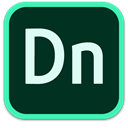Uncovering the Best MiniLight Alternatives for Your Rendering Needs
MiniLight is a fascinating global illumination renderer, celebrated for its minimalist design and educational value. As a command-line application that reads simple text model files and outputs PPM images, it's an excellent tool for understanding rendering fundamentals. However, its simplicity, while a strength, can also be a limitation for those seeking more advanced features, broader platform support, or a richer user experience. If you're looking to move beyond MiniLight's elegant confines, a world of powerful rendering alternatives awaits.
Top MiniLight Alternatives for Advanced Rendering
Whether you need physically accurate simulations, intuitive interfaces, or specialized features, these MiniLight alternatives offer a range of solutions to elevate your rendering projects. Dive in to find the perfect fit for your workflow!

LuxCoreRender
LuxCoreRender is a physically based and unbiased rendering engine, providing a more advanced and realistic approach to light simulation compared to MiniLight. It's Free and Open Source, available on Mac, Windows, and Linux, making it a highly accessible choice for photorealistic rendering.

Keyshot
KeyShot is an interactive raytracing and global illumination program, a significant step up from MiniLight for creating photographic renders. It's a Commercial application for Mac and Windows, featuring advanced studio capabilities for high-quality visualizations.

POV-Ray
The Persistence of Vision Raytracer (POV-Ray) is a high-quality, totally free tool for creating stunning three-dimensional graphics. Like MiniLight, it's a raytracer, but offers far more complexity and features. It's Open Source and available on Windows and Linux, providing a robust rendering environment.

appleseed
appleseed is a modern, open source, physically-based rendering engine designed to produce photorealistic images, animations, and visual effects. It offers a more advanced and portable solution than MiniLight, available for Free on Mac, Windows, and Linux.

RenderMan
PhotoRealistic RenderMan (PRMan) is a proprietary, industry-standard RenderMan-compliant renderer used widely in film production. While MiniLight is a basic renderer, RenderMan is a professional-grade 3D renderer capable of generating high-resolution images. It's available as Free Personal and a paid Commercial version for Mac, Windows, and Linux.

Adobe Dimension
Adobe Dimension is a 3D tool made for graphic designers to create high-quality, photorealistic images. Unlike MiniLight's command-line interface, Dimension offers a graphical user interface for 3D modelling and HD-Rendering. It's a Commercial part of the Adobe Creative Cloud, available for Mac and Windows.

Mitsuba
Mitsuba is an extensible rendering framework written in portable C++, offering both unbiased and biased techniques. As a physically based renderer, it provides a much more comprehensive feature set than MiniLight. It's Free and available on Mac, Windows, and Linux.

V-Ray
V-Ray is a complete rendering solution, widely used in professional contexts for its power and flexibility. While MiniLight is a basic renderer, V-Ray is a Commercial product available across Mac, Windows, Linux, and integrated with various 3D software like Rhinoceros, Autodesk 3ds Max, Revit, and Sketchup, making it a versatile alternative for complex projects.

Kerkythea
Kerkythea is a powerful, feature-rich, and fast standalone raytracing renderer. It expands upon MiniLight's basic raytracing with additional features and network rendering capabilities. It's Free and available on Mac, Windows, and Linux, with exporters for Blender and Google SketchUp.

Clara.io
Clara.io is a full-featured cloud-based 3D modeling, animation, and rendering software tool that runs directly in your web browser. Unlike MiniLight, it offers extensive 3D modelling, animation, real-time rendering, and WebGL capabilities, making it a comprehensive Freemium online alternative.
Choosing the right MiniLight alternative depends on your specific needs, whether you prioritize photorealism, ease of use, advanced features, or open-source flexibility. Explore these options to find the rendering software that best empowers your creative vision and technical requirements.